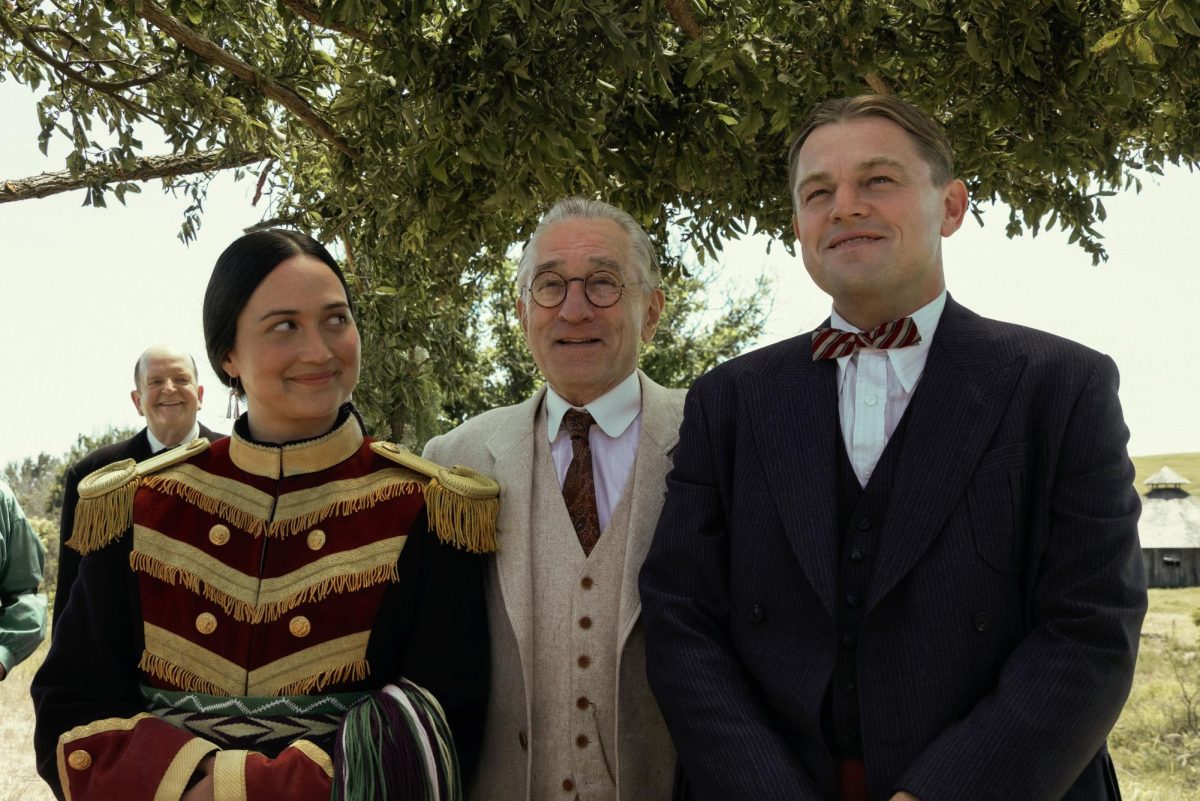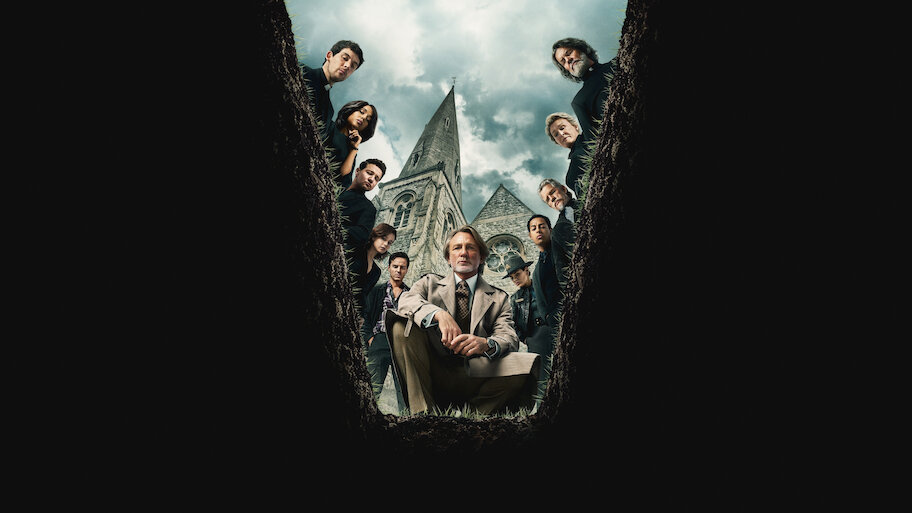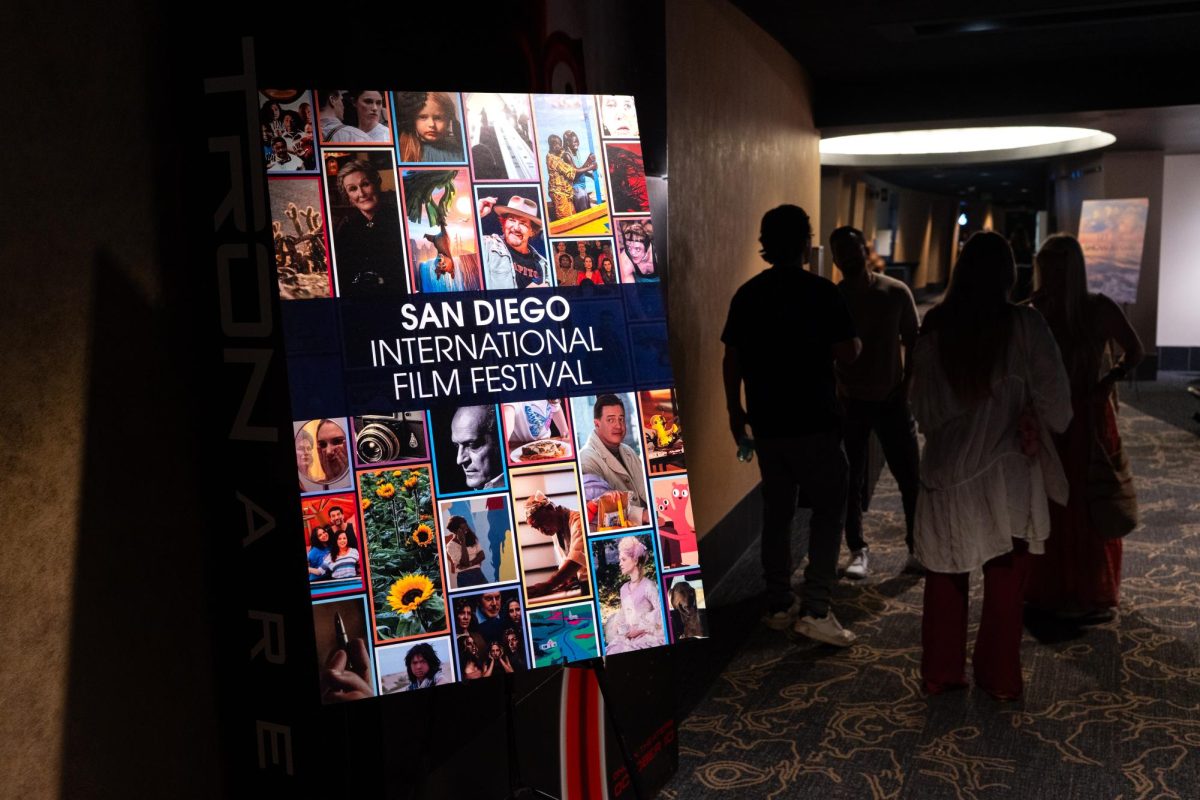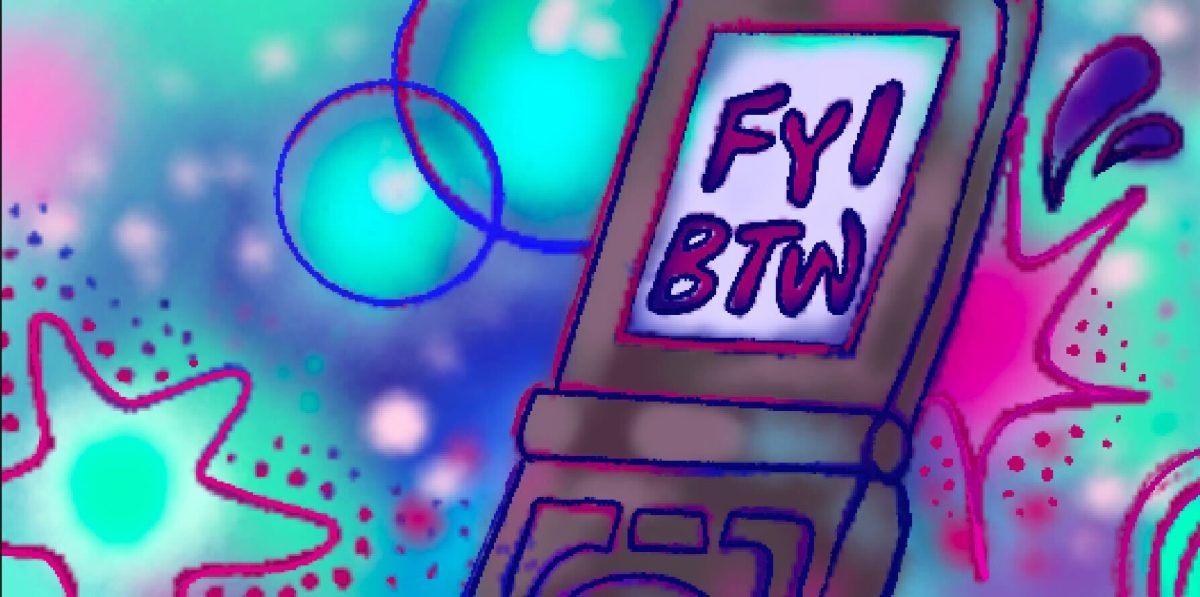The year 2023 has brought several films that center on humanity’s deep-seated evil capabilities and leave you questioning society. The most recent film to do this was Christopher Nolan’s “Oppenheimer,” but now, Martin Scorsese’s brutal retelling of a dark part of history in “Killers of the Flower Moon” has topped that.
Based on David Gran’s novel of the same name, the film centers on the Osage Nation — home to some of the richest people in America due to the discovery of oil on their land in the 1920s — as one by one their people turn up dead, spawning mystery, conspiracy, and the birth of the FBI. Like many others, I wasn’t aware of this story before the film, and knowing this is a true story was both fascinating and disheartening. Scorsese had different options on which lens to tell this story through. Initially, he was going to make it from the perspective of Detective Tom White (Jesse Plemons) and the FBI. However, after discussing it with lead Leonardo DiCaprio, they knew it had to be told from a more personal perspective, which is where the love story between DiCaprio’s Ernest and Lily Gladstone’s Mollie was born.
Their relationship is the heart of the film. As we watch the tragic events unfold, we watch Mollie wrestle with the back-to-back unsolved murders of her family and Ernest’s inner turmoil about his deceitfulness. Unlike the novel, we are shown exactly who is responsible for Osage’s systematic murders at the beginning of the film. It’s not a “whodunit,” it’s a “who didn’t do it.” While this might diminish the murder mystery aspect of the book, it gives the viewer a clear insight into the evil greed that drives Ernest and his uncle William Hale (Robert De Niro). De Niro plays the perfect wolf in sheep’s clothing. His 180 degree turn from town favorite to plotting villain is fascinating to watch, especially in juxtaposition to DiCaprio’s tractable lover role. The film’s shining performance, however, comes from Lily Gladstone.
Gladstone’s ability to offer so much emotion with such subtlety moved me tremendously. As Scorsese said about her performance in his recent Time magazine profile, there is “a fierceness and serenity at the same time. And it’s encased in this intelligence — the eyes say it all.” Her determination for justice leads us through the story and makes the viewer empathize with the Osage people. As the film progresses, we watch as more people become implicated and complacent to the murders, while Mollie, her family, and her community suffer. Mollie turns to Ernest for comfort and support, all the while he has been behind her turmoil all along. That is why the decision to make Mollie and Ernest’s relationship the focal point drives the film’s message home; it shows how greed can remove all human decency.
Some might wonder why the film wasn’t from Mollie or any other Osage’s perspective. Osage language consultant Christopher Cote thought the same and expressed his thoughts on the matter at the premiere saying, “As an Osage, I really wanted this to be from the perspective of Mollie and what her family experienced. But I think it would take an Osage to do that. Martin Scorsese not being Osage, I think he did a great job representing our people.”
And as great as it would’ve been to have that perspective, unfortunately, an Osage didn’t make this film. Scorsese did. And considering this, Cote still thought Scorsese represented his people well. Hopefully, in the future, Indigenous filmmakers have the opportunity to make a film of this scale, depicting a more authentic picture. Showing the events from Ernest’s perspective makes it very clear who the wolves in the picture are. Scorsese also worked closely with Osage Principal Chief Geoffrey Standing Bear to carefully craft this story and give it the proper respect it deserves. He takes his time to tell this harrowing story, with every second of screen time being just as important as the last. The three-and-a-half-hour runtime isn’t felt, which is a testament to Scorsese’s long-time editing partner Thelma Schoohmaker. Unlike many films these days, he doesn’t hold the audience’s hands the whole way through to tell us who is in the wrong because that is clearly shown.
I could go on and on about how the cinematography was beautiful for a film with such an ugly truth. I could lament about the sound and how amazing the acting was across the board and how excellent the writing was. But instead of focusing on the obvious technical marvels achieved, we should focus on the message: seeing the sins of the past so blatantly placed in front of us should make us reflect on the morality of others and ourselves and how complacent we are in the face of injustice. I believe “Killers of the Flower Moon” is Scorsese’s most important film yet, and everyone should take the time to see it.
Image courtesy of Apple TV +








